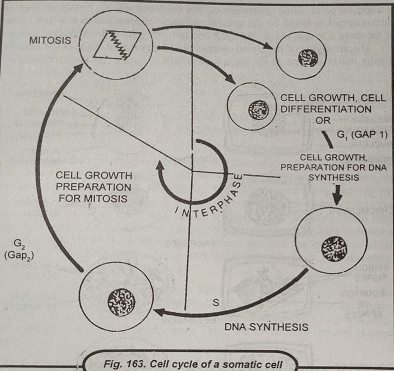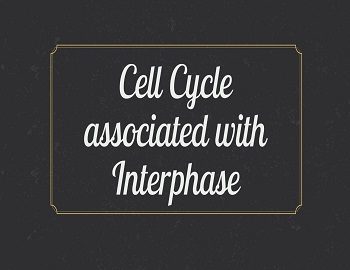Table of Contents
Cell Cycle associated with Interphase:
Each cell capable of division passes through a sequence of events called the cell cycle. The cell cycle of a somatic cell usually consists of long interphase followed by a short mitotic or M-phase. The biochemical analysis of interphase nucleus has revealed that interphase is the most active stage in the cell cycle. It is, in fact, the preparatory stage during which all the material necessary for the chromosomal division and cytoplasmic division are collected. Interphase is very lengthy and may take 12-20 hours and is further divided into following three stages-
G1 Phase or Pre-synthetic Phase:
It is after the cytokinesis of the previous cell division. During this phase, there is a synthesis of RNA and nucleoproteins. There is an increase in the size of the nucleus and the material of DNA replication is also collected. In this phase, the cell carries out its physiological functions and prepares the machinery needed for the next stage.

S Phase or Synthetic Phase:
It follows G1 Phase. During this phase, the DNA molecule of each chromosome replicates by the synthesis of a new DNA molecule on the template of the existing DNA. This replication results in doubling the number of DNA strands in each chromosome. Thus, each chromosome is now composed of two sister chromatids held together by a common centromere. The cell thus retains the original diploid chromosome number and contains a duplicate set of genes.
G2 Phase:
It is after the synthetic phase. During the G2 phase, there is an increase in the amount of cytoplasm and also an increase in the number of cytoplasmic organelles. This leads to an increase in cell size and initiates cell division. During the G2 phase, a cell contains double the amount of DNA present in the original diploid cell. The letter G is used to denote the gap between the S phase and the mitotic phase.









Comments (No)